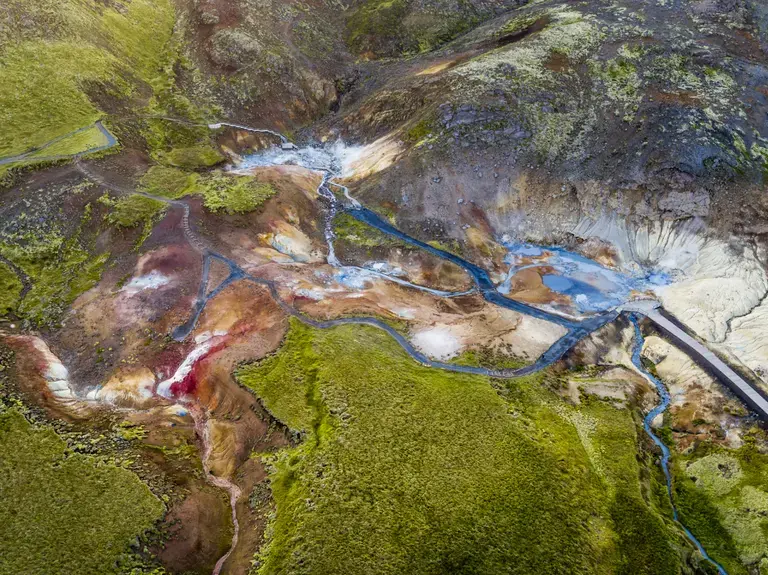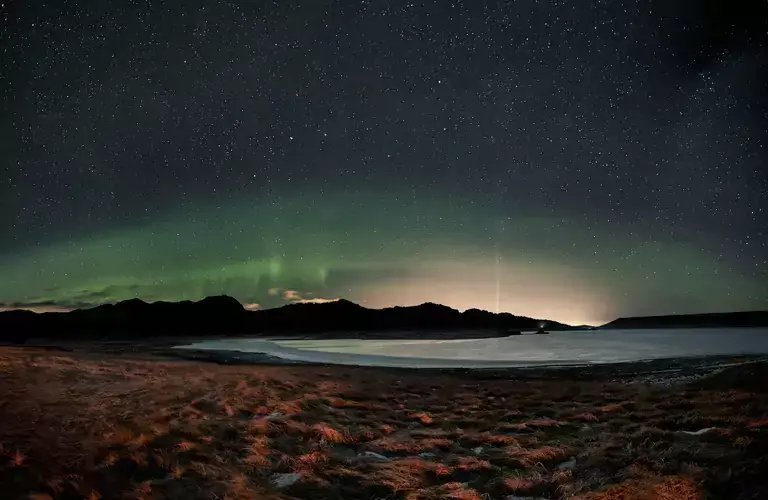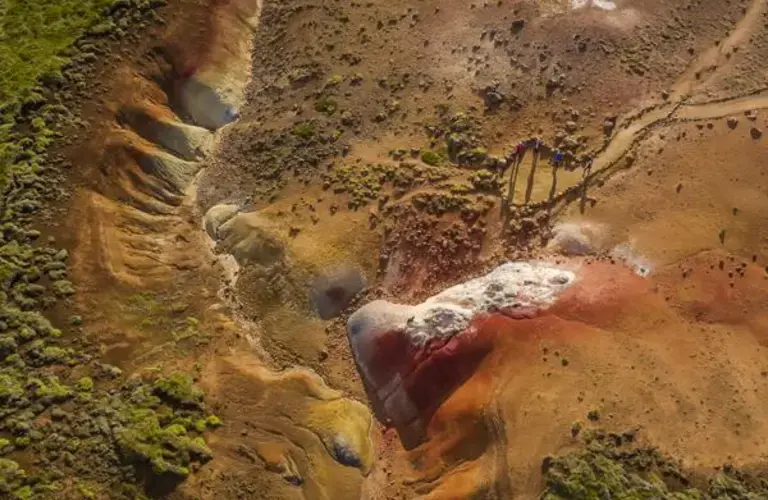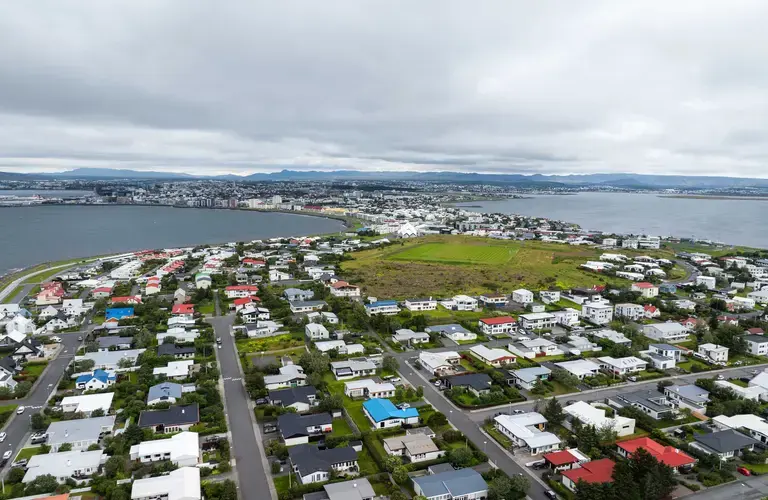
Seltún & Krýsuvík - July 2025
You don’t need to travel far from Iceland’s capital to witness the otherworldly spectacle of geothermal activity. A scenic 40km drive from Reykjavík takes you to the steamy wonderland of Krýsuvík, with the vibrant Seltún area at its heart. This high-temperature geothermal zone showcases steaming fumaroles, bubbling mud pots and sulphur-stained ground across a colourful palette of white, yellow, red, orange and green. It’s an incredible testament to Iceland’s volcanic forces.
Top attractions

A Road Trip to Remember
You might think that Iceland’s lunar-like landscapes can only be reached by travelling far from the big city, but that’s not the case. If you head to Hafnarfjörður then take a turn south at road 42, you’ll be on a road trip that fills your windows with mossy lava fields, rolling multi-hued mountains, intriguing rock formations and long black-sand beaches. The road winds along the western shore of Kleifarvatn lake, with picnic pit stops and pull-over parking spots offering great photo opportunities. You don’t need to end at Seltún, either – if you want more natural wonder, stop by Grænavatn (Green Lake), a small lake within a volcanic crater, where the high sulphur content results in water with a green hue.

Surreal Seltún
At the core of Krýsuvík, Seltún is a dramatic display of geothermal power: boiling mud pots, steaming solfataras and vivid mineral-rich soils. Wooden boardwalks guide visitors safely through the field, with interpretive signage detailing the geology and history of the area.
Early visitors like Robert Bunsen studied sulphur here in the 19th century, and sulphur was once mined locally in the 1700s and 1800s. Walking the loop trail under the slopes of Sveifluháls ridge offers both scenery and insight into the remarkable Mid Atlantic Ridge, making Seltún a compelling stop for those fascinated by geology and Iceland’s dynamic landscape.

Look for a Lake Monster
Located a short distance from Seltún, Kleifarvatn is the largest lake on the Reykjanes peninsula (roughly 10 sq km, and up to 97 metres deep). No rivers run to or from it – it's fed and drained underground through fissures in the volcanic rift system. There are roadside stops to admire the vast views, and paths through lake-edge lava that offer great perspective over the sweeping blue expanse and black-sand shoreline. Look out for the monster that supposedly dwells here, a serpent-like creature the size of a large whale!

A Volcanic Past
The broader Krýsuvík region sits atop an active volcanic fissure system where plate tectonics and magma converge. Evidence of historical eruptions – from the medieval 12th-century Krýsuvík Fires that buried the original farm settlement in lava – still marks the landscape, including Ögmundarhraun lava fields and ruined farm structures. Today, marked trails ascend Sveifluháls ridge for dramatic panoramas and glimpses of fumarolic activity along the slopes.
How to get to Seltjarnarnes

By Bus
To get to Seltjarnarnes and Grótta by bus, you can take bus number 11, which runs between Mjódd bus stop and Seltjarnarnes. The Hofgarður bus stop is closest to Grótta, which is 1 km away from the bus stop.
By Electric Scooter
Electric scooters are available at Seltjarnarnes.
By Car
There are parking lots in the area, for example, at Grótta.